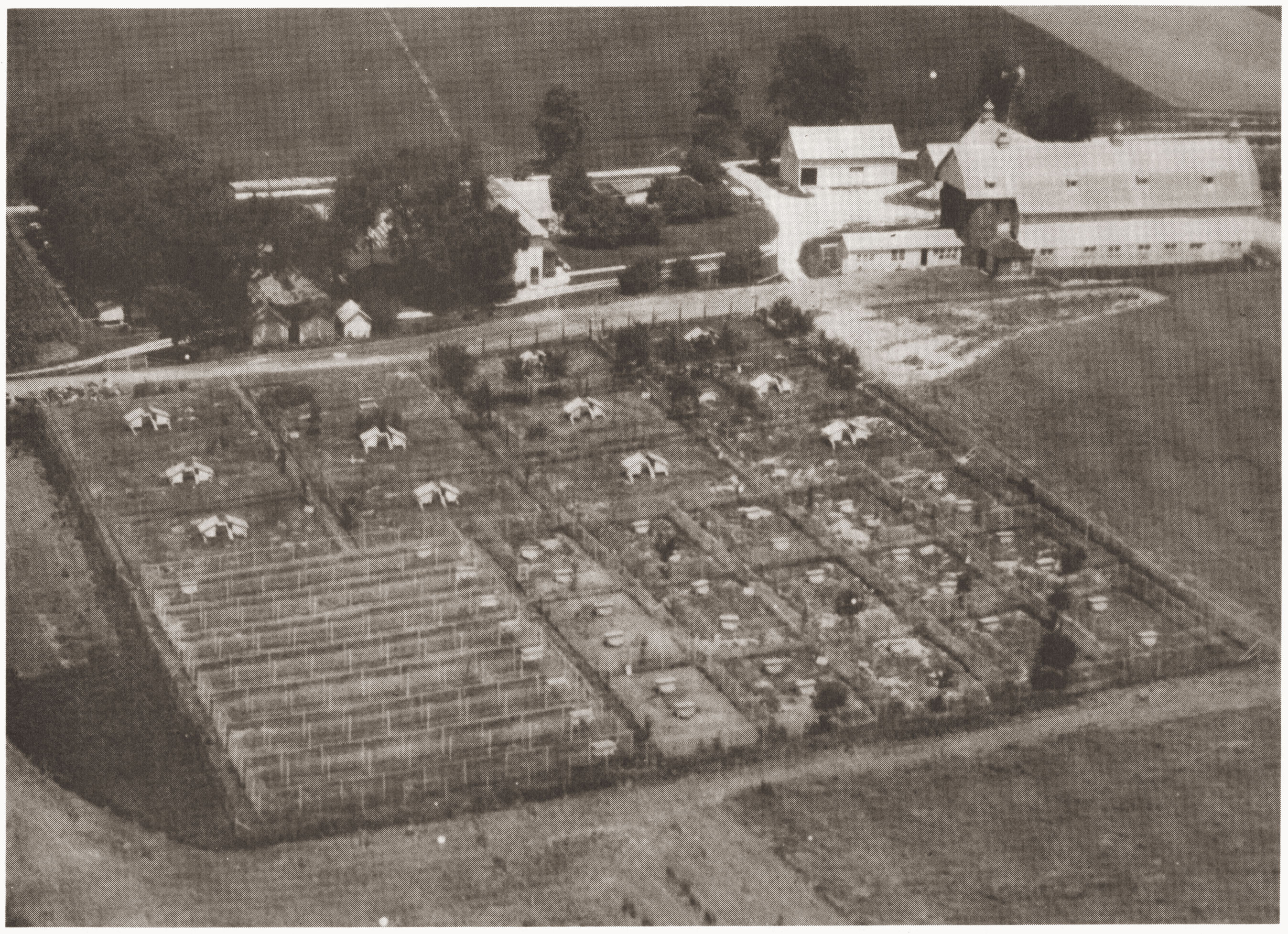
At its peak, the Oriole Home Fox Farm raised up to 1000 foxes. Photo used with permission from the book Heritage of Ixonia, by Carl and Alida Jaeger.
By HOWARD WIEDENHOEFT
Reading the minutes of insurance companies is truly a study of history. We’re reminded of this once again as we look at what our founding companies insured during the 1930s, an era of increasing modernization.
According to the Wiedenhoeft farm abstract, the Milwaukee Electric Railway and Light Company purchased easements rights for electric lines in 1936. This meant electric power was finally coming to rural Wisconsin! Prior to this, farmers supplied their own electricity with gas-powered generators. As early as 1924 both Ixonia Mutual Insurance Company and Watertown Mutual Insurance Company insured these individually owned “electric plants.” At Watertown Mutual’s 1927 annual meeting, directors expressed concern over the storage of gasoline needed to power these engines and the following by-law was approved: “power apparatus must be housed in a separate noncombustible apartment and if after inspection by officials it is found that this order is not complied with the company will not pay any loss occurring thru such negligence.”
Radios
During the 1930s, rural households moved forward with many of the same modernizations as did their distant urban neighbors. In January 1938, Watertown Mutual passed the following resolution: “that necessary motors and electric equipment, except radios, used in and around the house for necessary operations of the household shall be considered insured under household furniture.” Members were reminded that these items were only insured against fire and lightning and not against power surges. Notice that radios were not included, but had to be listed separately (a possible reason is that they were a new household item—in the same way, decades later, computers initially were insured separately). On December 31, 1938, Watertown Mutual had $5,050 of radios insured.
Fox Farming
Another time-relative insurance offered by our founding mutuals was to fox farmers. During the 1930s and 40s, fur farming was a large part of Wisconsin’s economy. Raised for their pelts, Wisconsin’s mink, fox and other small, fur-bearing animals became a high-yielding commodity. Locally, the Oriole Home Fox Farm located on Fox Road in Ixonia operated from 1920 to 1952, and at its peak was an enterprise consisting of 1,000 foxes.
In 1934, Watertown Mutual approved insurance for silver black foxes at a maximum of $15 per head. While both companies insured the farms themselves, neither has record of specifically insuring any foxes.
Read more!
Comparing the Capitalizing of Two Early Mutuals
Supporting Dairy in the Late 1800s
1879 Early Challenges for a Young Mutual
Ixonia Mutual’s First $1000 Loss
1885 A Year of Neighbor Helping Neighbor
Taxes, War and the English Language
Supporting the Community’s Fire Protection
Board Directors and Their Meetings
Standardization of Wisconsin Mutuals
Of Electricity, Radio and Foxes
Our Annual Meetings Over the Years
How a Major Disaster Affected Extended Coverage and Reinsurance
Surviving the Big Dogs in the 1960s
Introducing Agents to the Mutuals
Establishing Confidence in Financial Strength
The 1990s, Advancement and Angst
Ixonia Mutual and Watertown Mutual Merge and a New Company is Formed